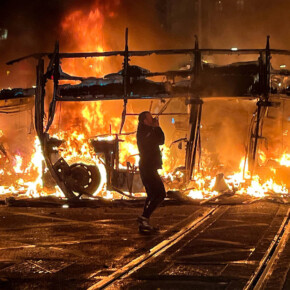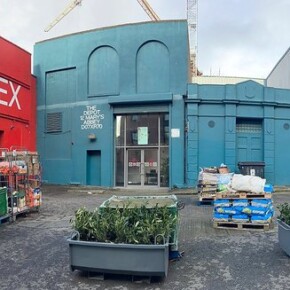Remembering Dublin’s tenements
Dublin People 16 Aug 2014AT the beginning of the 20th century, some 21,747 families lived in single roomed slums in one of Dublin’s 6,196 tenement houses.
These families made up more then one third of the city’s population. The capital’s famous Georgian homes, once the domain of the country’s ruling elite, had become home to the Dublin working class.
As the Anglo-Irish
‘ascendency’ abandoned the city following the Act of Union (1800), their properties were left in the care of land agents.
These
‘stately’ homes were subdivided into several dwellings by the new landlords and the rooms were let to the growing population of working class families.
Georgian homes had been designed for one well to do family and their domestic servants, who lived in the basement.
One hundred years ago, however, it was not uncommon to find up to a dozen large families renting rooms in the same tenement building, with regular reports of over 100 people living in the same building.
The landlords cared little for the welfare of their tenants, or the upkeep of their properties. As a result, the old Georgian tenements, which by 1900 were up to 150-years-old, were falling into wreck and ruin. Many tenement buildings were literally crumbling down around those living in them.
Common problems included, leaking roofs, burst water taps, sagging ceilings and rotting floor boards. Yet landlords expected extortionate amounts of money from tenants for the privilege of having one small room to call home.
In 1900 Dublin had both the highest death rate and the highest infant mortality rate of any city in Ireland or Britain.
Unsurprisingly, sickness and disease thrived in such conditions. The tenements became known for a host of illnesses including tuberculosis, typhoid, pneumonia, smallpox, diphtheria and whooping cough.
Highlighting the living conditions of the working class in 1913, James Connolly wrote scathingly about the tenements and the society that allowed them to exist,
‘Ireland is a country of wonderful charity and singularly little justice.
‘And Dublin being an epitome of Ireland, it is not strange to find that Dublin, a city famous for its charitable institutions and its charitable citizens, should also be infamous for the perfectly hellish conditions under which its people are housed, and under which its men, women and children labour for a living.
‘No need for me to repeat here the tale of the vast proportion of the total families of Dublin who live in homes of one room per family, nor yet to tell of the figures given us year by year by Sir Charles Cameron – figures which drive home the fact that the high death rate of Dublin is in exact proportion to the class to which the victims belong, a death rate falling with the wealth of the people and rising with their poverty.
‘All these things ought to be familiar to every true patriot; if they are not, it is a sure sign that their patriotism takes no stock of those things which make for or against the well-being and the greatness of peoples.’
Tenement buildings claimed many lives as they became more and more structurally unsound. One of the most infamous tenement disasters occurred on Church Street in Dublin’s north inner city at 8.30pm on Tuesday, September 2, 1913. Two, four-storey tenement buildings, No.66 and No.67, collapsed killing seven residents and injuring dozens more, at least eight of whom were seriously injured.
Over 100 people were left homeless by the tenement collapse, which could have been avoided, as Dublin Corporation was well aware that buildings in the area had become too dangerous for habitation.
However, with Corporation officials, councillors and Aldermen listed among the owners of Dublin’s tenements, little was done to improve the lot of the city’s working class.
Yet despite all the hardship, the tenements were also home to a strong sense of community. Neighbours looked out for each other and saw themselves as one big extended family.
What little there was to go around was shared and the weak and sick were looked after as best as was possible, by the community.
This strong community spirit became a source of great strength to Dublin’s working class when they took on the might of Irish capitalism during the 1913 Lockout.
One hundred years ago, over one third of Dublin’s population lived in
‘hellish conditions’ in tenement houses.
?¢Daithà Ã?’Riain is a Dublin based historian with a specific interest in social history and Ireland’s revolutionary period.











